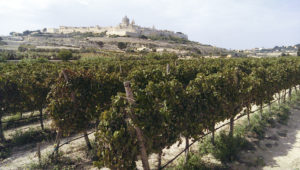Post-Vintage Vine Care
Albeit in dribs and drabs, rain has finally come after a long, extended period of drought that resulted in a below average tonnage of otherwise very healthy wine grapes harvested this past summer. The precipitation arrives in time so that the vines can replenish themselves before going into dormancy to get strong again for the next 2017 vintage.
You see, if there’s enough moisture available to the vine in the warm weeks after the grapes have been picked, the plant hangs on to its verdure of leaves that’s involved in the process of photosynthesis, an energy generating process that itself requires water. A watered vine will continue to convert carbon dioxide and water into oxygen and carbohydrates which are a storable energy source essential for the plant’s survival.
When grapevines are busy making much needed carbohydrates, they also take up vital nutrients in the form of minerals. These are likewise stored in their arms, trunk and roots to be used later to support respiration during dormancy in winter and to fuel new root and shoot growth in spring.
Both carbohydrates and nutrients are crucial for the development of a healthy canopy that can shade and protect the future crop from the scorching summer sun. More importantly from a productivity point of view, they can help boost the size of next year’s grape crop from vineyards that have suffered from adverse dry weather conditions during the previous growing season.
In winemaking regions like Malta, with long arid and hot summers and little rainfall throughout autumn, it’s therefore paramount that vignerons try and prolong the time window during which vines produce and store carbohydrates. When Mother Nature comes up short with water, growers can do so by means of irrigation, man’s alternative to timely rainfall, as part of a comprehensive post-vintage vine care plan.
Irrigation after the harvest, which mitigates the water stress which otherwise would cause the leaves to drop prematurely and halt the process of photosynthesis, works best when complemented by the timely application of fertilisers (such as potassium) now while vines can still accumulate and store minerals which they will use up again in spring to form new leaves and shoots.

A well-tended vineyard after harvest with drip irrigation tubes to mitigate rain shortages.
Fertilising will further contribute to a sizable grape crop. It prevents a lack of vital nutrients which can lead to inhibited shoot development but also delayed or erratic bloom as well as tardy ripening of the berries during the next season.
Apart from irrigating and fertilising, grape growers would do well by adding organic matter to the soil to improve its structure and water holding capacity, growing cover crops (typically legumes) which help the soil maintain its nutrients, prevent soil erosion and, as an extra bonus, provide the farmer with additional revenue. These are all helpful measures, too.
Effective pest and disease control is also more significant than commonly appreciated as infections with powdery or downy mildew can disrupt and reduce the movement of carbohydrates from leaves to the vine’s permanent wood.
It’s fundamental that vines are irrigated sufficiently and judiciously to alleviate the effects of dry weather. Irrigation isn’t only required in the period leading up to and throughout the harvest. Although lesser quantities of water are needed, complementing rain shortages by irrigation late in the year as part of a post-vintage vine care plan is almost imperative for the long-term sustainability of Malta’s vineyards.
Whilst vines will tolerate a season or two of poor conditions after grape picking, eventually the yield of their crop will suffer unless the grape grower gives his vineyard the necessary post-harvest TLC.
This article by Georges Meekers appeared first in the Times of Malta, 7 October 2016.

